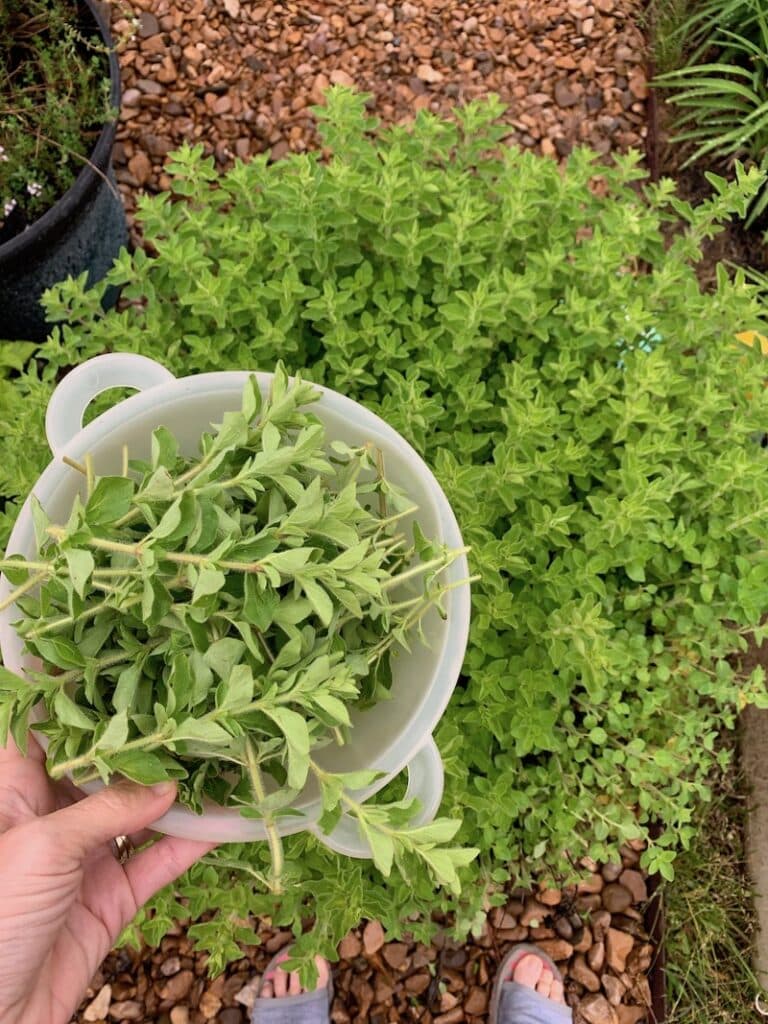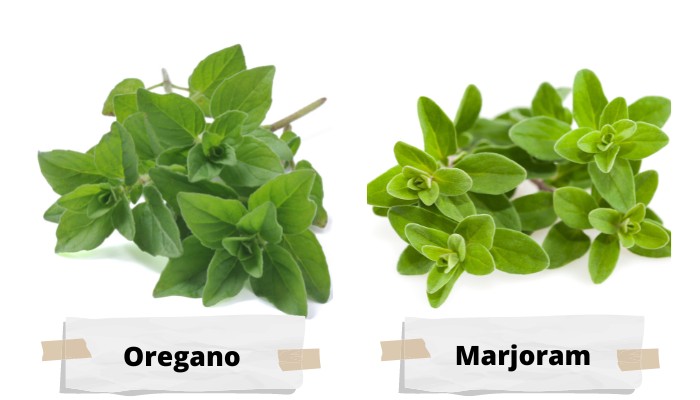Oregano and marjoram are two of the most popular herbs used in cuisines around the world. They share a similar taste profile and are frequently used interchangeably. However while closely related, oregano and marjoram are two distinct herbs with some notable differences.
Understanding the unique properties of each can help you best utilize them in your own cooking Read on to learn more about the key differences between oregano and marjoram
Botanical Classifications
Oregano and marjoram belong to the same genus of plants in the mint family known as Origanum. However, they are separate species:
- Oregano is known scientifically as Origanum vulgare. This is sometimes called wild marjoram or common oregano.
- Marjoram is Origanum majorana. Also called sweet or knotted marjoram.
They readily cross-pollinate and there are many hybrids and subspecies of each, which can make distinguishing them difficult. But in general oregano has a more robust flavor profile compared to the sweeter, more delicate taste of marjoram.
Appearance
Oregano and marjoram plants have slightly different physical characteristics:
- Oregano has oval, olive green leaves that are about 1 inch long. It has a woody base with branched, erect stems that grow 1-3 feet tall.
- Marjoram has smaller, rounder, gray-green leaves. The tender stems grow to 12-18 inches high and sprawl outward as they mature.
- Both have clusters of petite white or pink flowers that bloom in summer. These edible flowers have a milder flavor than the leaves.
So while marjoram is smaller and more delicate in appearance, visually telling the two apart can still be difficult. Taste and scent provide more definite clues.
Aroma and Flavor
The biggest difference between the two herbs comes down to their smell and taste:
- Oregano has a robust, pungent earthiness with notes of citrus and peppery spice. It has a bold presence that holds up well in hearty dishes.
- Marjoram has a gentler, sweet aroma. Its flavor is subtler and more floral than oregano, with hints of balsam-pine and citrus.
Oregano offers a sharp, warming flavor that pairs well with bold foods like meats, chili, cheese, and tomatoes. More mild-mannered marjoram complements delicate flavors like eggs, vegetables, fish, and salad dressings.
Growing Conditions
In the garden, oregano and marjoram thrive under similar conditions:
- Both prefer full sun and well-drained soil. They need less water and tolerate some drought.
- Marjoram is slightly less hardy and more prone to winter damage. It grows as an annual or short-lived perennial in cooler climates.
- Oregano is very hardy and grows year after year as a hardy perennial. It can be invasive in the garden.
- Start plants from seed, cuttings, or transplants. It may be best to plant marjoram and oregano separately since they readily cross-pollinate.
- Harvest leaves as needed once plants are established. Cut back stems to encourage bushy regrowth.
Both oregano and marjoram can also be happily grown in containers. Just be sure to use well-draining potting mix and allow plenty of sun exposure.
Uses in the Kitchen
In the kitchen, oregano and marjoram add flavor in similar ways:
- The leaves are most commonly used dried or fresh to season foods. Both dry well for longer storage.
- Chopped fresh leaves just before use provides the best flavor. Use marjoram more sparingly as it has a more delicate flavor.
- Add them early in cooking processes so the flavors develop and blend.AddTo tomato sauces, stews, meat rubs, marinades, and dressings.
- Oregano’s robust flavor enhances bold dishes like chili, pasta sauce, and grilled meats.
- Marjoram’s gentle notes nicely complement eggs, mushrooms, vegetables, fish, and salad.
Oregano and marjoram beautifully accent many shared dishes in Mediterranean, Italian, French, and American cuisine. Learning their subtle differences allows you to use each herb intentionally to enhance specific flavors.
Culinary Tips For Oregano
If you want to cook with oregano, which is a good idea, you should think about the taste it gives and how it reacts to heat.
You should add a few chopped oregano leaves to your pizzas and other Italian dishes because they taste best when they are young and soft. Oregano is best cooked with food and tends to hold up well in heat. Keep in mind, oregano is potent, so a little goes a long way.

Oregano has medicinal benefits that you may find helpful to know. Carvacrol has antiviral and antifungal properties. These also give oregano its spicy flavor. Oregano also has thymol, tannins, and bitters, which help it relax muscles, settle the stomach, make it more acidic, make it more bitter, help with coughing and congestion, and make you sleepy.
If you want to infuse the fresh leaves they can help with headaches, menstrual cramps, insomnia, and digestion. An herbal balm mixed with lavender can help ease pain and stiffness during a massage. When oregano is added to a hot compress, it can help clean cuts and wounds and reduce swelling.
Oregano (Origanum Vulgare) History
When oregano was first used, it was in ancient Greece to treat drug poisoning, seizures, and wounds that were too deep to be bandaged. The ancient Romans believed it brought happiness at weddings and they would often weave oregano into bridal wreaths. In the Middle Ages, oregano’s strong smell was mixed with straw to make floor coverings called “stewing herbs.”
The oregano plant is a bushy perennial that can grow up to 2ft tall. In the late summer the plant produces tiny flowers that are attractive to bees. Oregano leaves have a stronger flavor and more thymol than sweet marjoram leaves. This is especially true when they are grown and picked in full sun during warm months.
Greek oregano, Italian oregano, Za’atar oregano, and oregano hot and spicy are the four types of oregano you can grow and enjoy.
Greek Oregano smells like peppery thyme and has a licorice-like flavor. It tends to make you think of Greek food and pairs well with Greek cuisine. Greek oregano is easy to spot by its white flowers.
Italian oregano is not as nuanced as Greek Oregano and has a slightly sweet flavor. This plant has purple flowers.
Za’atar is a variety of oregano that grows wild in the Middle East. There are many herb and seed blends by the same name that you can buy.
Oregano Hot and Spicy grows in a way that is different from other oregano. It will fall over the side of the container it is grown in. Used in cooking, it gives food a strong, peppery taste and can be used instead of chiles.
Oregano and marjoram
FAQ
Can I use marjoram instead of oregano?
What is marjoram used for?
Is marjoram called anything else?
How to identify marjoram plant?
- The Ultimate Guide to Growing Strawberries in Raised Beds - August 8, 2025
- No-Dig Garden Beds: The Easiest Way to Grow a Beautiful Garden - August 6, 2025
- How to Protect and Preserve Wood for Raised Garden Beds - August 6, 2025

